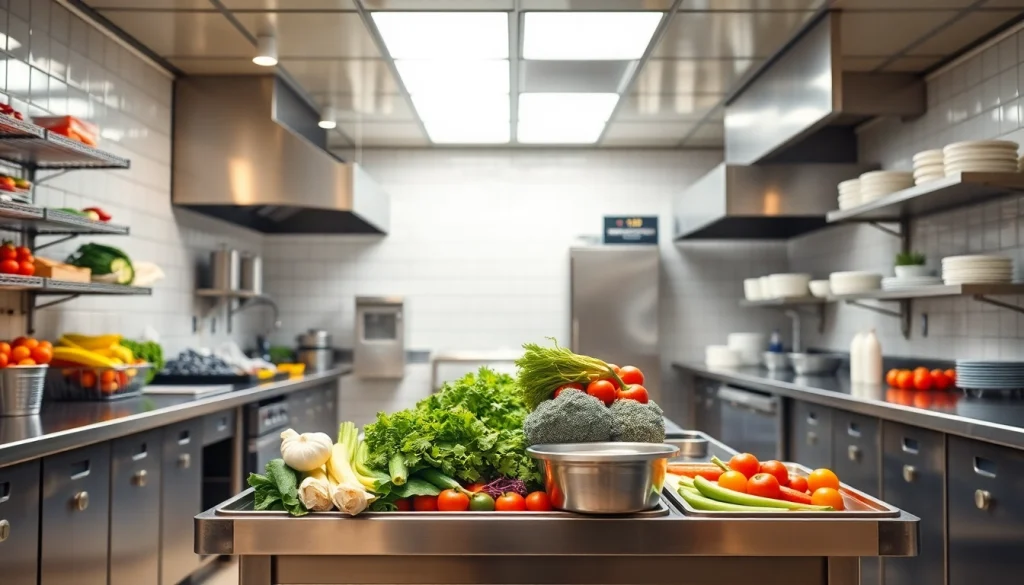Introduction to Prep Table Repair
In the fast-paced environment of a commercial kitchen, every piece of equipment plays a critical role in the overall efficiency and productivity of the establishment. One such essential piece of equipment is the prep table—designed for food preparation tasks that streamline cooking processes. However, like any appliance, prep tables can experience wear and tear, leading to the need for repair and maintenance. This comprehensive guide aims to delve into the nuances of prep table repair, empowering kitchen staff and managers with the knowledge required to troubleshoot common issues, implement effective repair techniques, and establish best practices for regular maintenance.
What is a Prep Table?
A prep table is a specialized piece of equipment used in commercial kitchens that typically combines a workspace with refrigeration functionality. It facilitates the storage and preparation of ingredients for meals, thus ensuring that food remains at safe temperatures while being easily accessible to chefs. Prep tables can come in various sizes and configurations, including refrigerated units for perishables and dry storage options. They often feature cutting surfaces, integrated sinks, and a range of compartments designed to hold ingredients and tools needed during food preparation.
Common Issues with Prep Tables
Despite their robustness, prep tables can be prone to a variety of problems, which may hinder their performance. Some of the most frequently encountered issues include:
- Temperature control failures: These can cause food to spoil or not be stored at safe temperatures.
- Poor door seals: Damaged seals can lead to loss of cooling efficiency and increased energy consumption.
- Water leaks: Leaks can lead to water pooling and potentially cause significant damage over time.
- Electrical malfunctions: Issues with wiring or components can prevent optimal operation.
The Importance of Regular Maintenance
Regular maintenance is crucial for the longevity and effective operation of prep tables. Scheduled checks and preventive measures can help identify potential issues before they escalate, reducing downtime and repair costs. Additionally, maintaining equipment in optimal working order also contributes to food safety and compliance with health regulations.
Troubleshooting Prep Table Problems
Identifying Temperature Control Failures
Temperature control failures are among the most significant challenges faced by prep tables. To troubleshoot these issues, consider the following steps:
- Check the thermostat: Ensure that the thermostat is set correctly. If it’s malfunctioning or inaccurate, it may need recalibration or replacement.
- Inspect the condenser coils: Clean the coils regularly to prevent dust accumulation that could impair performance.
- Monitor ambient temperature: Consider the placement of the prep table. If it’s located near heat sources or in a warm environment, it may struggle to maintain proper temperatures.
- Ensure proper airflow: Make sure vents are not obstructed by storage or other equipment, and that air can flow freely.
Assessing Door Seal Integrity
The integrity of door seals is pivotal in maintaining consistent temperatures within the prep table. Follow these steps to assess and address door seal problems:
- Visual inspection: Check for cracks, tears, or areas where the seal has pulled away from the frame.
- The dollar bill test: Insert a dollar bill between the door and the seal. If you can easily pull it out, the seal may need replacing.
- Replace faulty seals: If you notice deterioration, consider replacing seals to restore proper efficiency.
Dealing with Water Leaks
Water leaks are more than just an inconvenience; they can lead to mold growth and damage to flooring and equipment. To address leaks:
- Identify the source: Traces of water can help pinpoint where the leak is originating from—whether it’s a drain or a defective component.
- Drain clogs: Clear any clogs and ensure that water can drain away appropriately.
- Check connections: Ensure all connection points, such as hoses and fittings, are secure and not contributing to leakage.
Prep Table Repair Techniques
Tools Required for Repair
Before embarking on repairs, it is essential to gather the necessary tools. The following tools are commonly required for prep table repairs:
- Multi-bit screwdriver set
- Wrenches (adjustable and fixed)
- Thermometer (for temperature checks)
- Cleaning supplies (brushes, cloths, and cleaning agents)
- Replacement parts (such as seals, thermostats, etc.)
Step-by-Step Repair Process
When tackling prep table repairs, having a systematic approach is vital. Here’s a step-by-step process to follow:
- Turn off the power: Safety first! Before beginning, ensure that the table is disconnected from power.
- Disassemble the necessary parts: Carefully remove components such as doors or drawers to access internal workings while noting how to reassemble them.
- Replace or repair defective items: Address any issues identified during your troubleshooting, such as replacing faulty thermometers or repairing leaks.
- Reassemble and test: Once repairs are complete, meticulously reassemble the table, restoring all components and turning it back on to monitor functionality.
When to Call a Professional
While many repair tasks can be handled in-house, certain situations require the expertise of professionals. Consider seeking professional help for:
- Severe electrical issues that may pose safety hazards.
- Complex component replacements that could involve refrigerant handling.
- Situations where DIY repairs fail to resolve the problem after multiple attempts.
Best Practices for Maintaining Your Prep Table
Daily Cleaning Routines
Implementing a daily cleaning routine is essential to the proper maintenance of prep tables. Ensure that every day, surfaces are wiped down, spills are cleaned up, and food debris is removed. Use appropriate sanitizing solutions to minimize the risk of contamination.
Temperature Monitoring Tips
Keeping an eye on temperature is vital for food safety. Consider the following tips:
- Check internal temperatures regularly, ideally twice a day.
- Use high-quality thermometers, and calibrate them periodically.
- Document temperature checks to create accountability and maintain records.
Importance of Scheduling Regular Servicing
In addition to daily care, broader servicing should be scheduled at regular intervals to ensure that all systems are functioning optimally. Opt for professional maintenance every six months to a year, depending on usage levels. This approach not only prolongs the life of your prep table but ensures compliance with health safety standards.
Conclusion and Resources
Understanding the complexities of prep table repair is invaluable for any commercial kitchen. By recognizing common issues, embracing a proactive approach to maintenance, and knowing when to seek professional help, kitchen teams can keep their operations running smoothly and efficiently. Below are additional resources to help enhance your knowledge and capabilities in maintaining kitchen equipment.
Helpful Resources for Commercial Kitchen Equipment
Consider these resources for further reading:
- Prep Tables Pizza Salad Sandwich Maintenance & Repair Guide
- 5 Common Refrigerated Prep Table Problems and How to Fix Them
FAQs About Prep Table Repair
As you delve deeper into the world of prep table repair, you may encounter various questions. Here are some common inquiries:
- What is the average cost of prep table repair? Costs can vary significantly based on the issue, but budgets should typically account for parts and labor.
- How often should I service my prep table? Generally, performing maintenance every six months is advisable, but this may fluctuate depending on usage frequency.
How to Choose a Repair Service
Selecting the right repair service can enhance the longevity of your equipment. Look for companies with strong reputations, experience in commercial kitchen repairs, and certified technicians. Additionally, consider customer reviews and service guarantees to ensure reliability.


